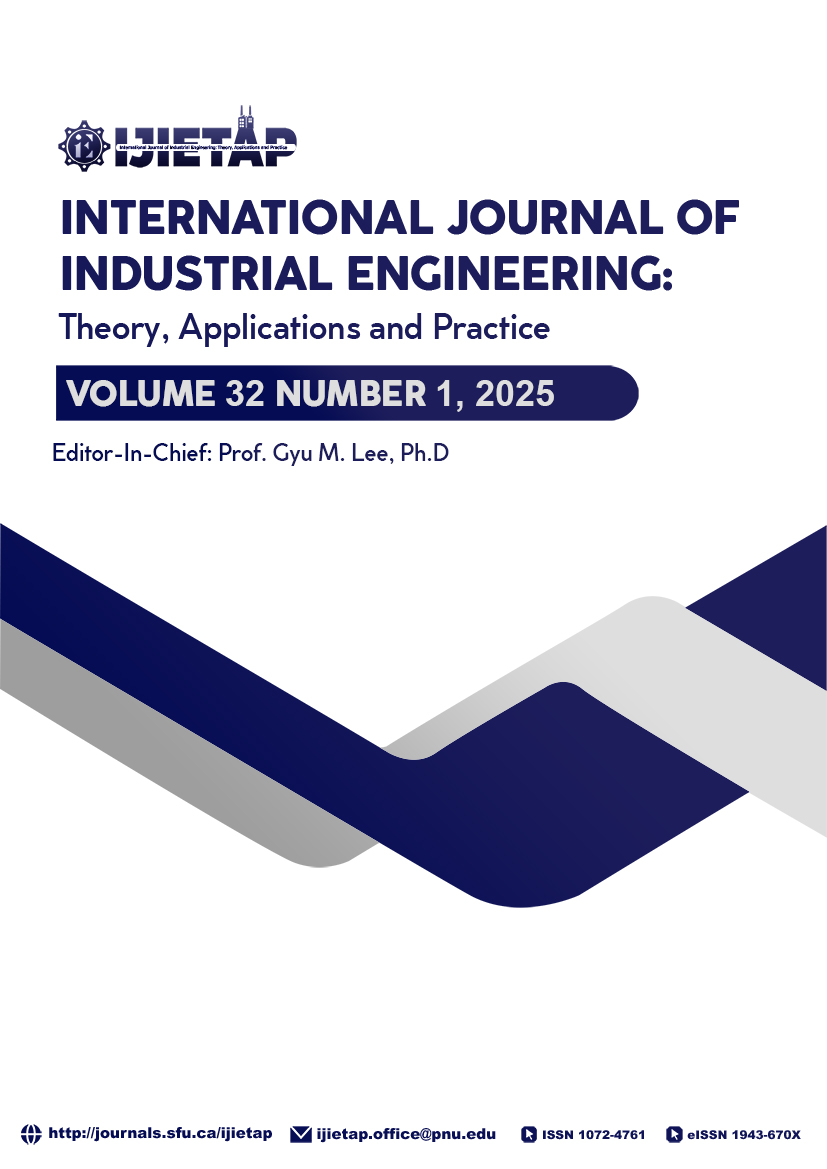A Two-stage Algorithm for Production Distribution Optimization of Fresh Products
DOI:
https://doi.org/10.23055/ijietap.2025.32.1.10119Keywords:
Vehicle Routing Problem; Production Scheduling; Fresh Products; Ant Colony Optimization; Genetic Algorithm.Abstract
The rise of e-commerce and the just-in-time system has imposed more stringent demands on fresh product supply chains. This paper addresses the challenges of production and distribution decision-making under uncertainty, considering the vehicle routing problem with time windows (VRPTW). Fresh products are distributed immediately after production, with any remaining perishable products deteriorating before they can be transported. To address these issues, a mathematical model is proposed for optimizing the production and distribution of fresh products. The objective optimization model for production scheduling and VRPTW is classified as an NP-hard problem. To tackle and optimize this complex problem, a two-stage algorithm combining ant colony optimization (ACO) and a fuzzy adaptive genetic algorithm (FAGA) is proposed. The approach begins by determining the critical combination parameters of the algorithm. Subsequently, analysis of the model's results reveals that production and distribution costs decrease significantly when integrated decision-making is employed. Additionally, the vehicle setup cost introduces a turning point in the overall target cost. Finally, a numerical experiment on VRPTW is conducted, with the results demonstrating the effectiveness of the proposed two-stage algorithm.
Downloads
Published
How to Cite
Issue
Section
License
The Author(s) must formally transfer each article's copyright before publication in the INTERNATIONAL JOURNAL OF INDUSTRIAL ENGINEERING. Such transfer enables the Journal to defend itself against plagiarism and other forms of copyright infringement. Your cooperation is appreciated.
You agree that the copyright of your article to be published in the INTERNATIONAL JOURNAL OF INDUSTRIAL ENGINEERING - THEORY, APPLICATIONS, AND PRACTICE is hereby transferred, throughout the World and for the full term and all extensions and renewals thereof, to INTERNATIONAL JOURNAL OF INDUSTRIAL ENGINEERING - THEORY, APPLICATIONS, AND PRACTICE.
The Author(s) reserve(s): (a) the trademark rights and patent rights, if any, and (b) the right to use all or part of the information contained in this article in future, non-commercial works of the Author's own, or, if the article is a "work-for-hire" and made within the scope of the Author's employment, the employer may use all or part of the information contained in this article for intra-company use, provided the usual acknowledgments are given regarding copyright notice and reference to the original publication.
The Author(s) warrant(s) that the article is Author's original work and has not been published before. If excerpts from copyrighted works are included, the Author will obtain written permission from the copyright owners and credit the article's sources.
The author also warrants that the article contains no libelous or unlawful statements and does not infringe on the rights of others. If the article was prepared jointly with other Author(s), the Author agrees to inform the co-Author(s) of the terms of the copyright transfer and to sign on their behalf; or in the case of a "work-for-hire," the employer or an authorized representative of the employer.
The journal does not provide the author copy of the final paper when it is published. The author(s) can make(s) a subscription to INTERNATIONAL JOURNAL OF INDUSTRIAL ENGINEERING - THEORY, APPLICATIONS, AND PRACTICE if they want to get the final paper that has already been published.
The journal is registered with the Library of Congress (ISSN # 1943-670X). All rights reserved. No part of this publication may be reproduced, stored in a retrieval system, or transmitted in any form or by any means, electronic, mechanical, photocopying, recording, or otherwise, without the prior written permission of the journal.
The author reserves patent and trademark rights and the right to use all or part of the information contained in the article in future non-commercial works.





